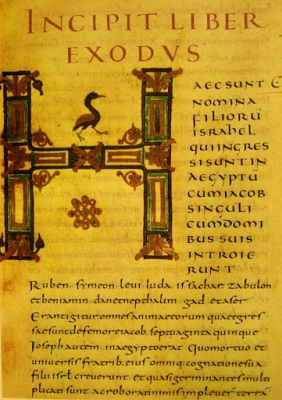
The Holy Roman Empire standardised handwriting in the Latin alphabet. Emperor Charlemagne of the empire did not read or write but standardised handwriting across his empire so that people in different regions could all read the Bible. The name of this script, Carolingian, comes from Carolus, Latin form of the name of Charlemagne (also called Charles the Great). Minuscule in Latin means “smallish,” what we would today refer to as lowercase. It was used from AD 800-1200.
Uppercase and lowercase letters in our Latin alphabet copy elements from Carolingian minuscule. Carolingian minuscule also had rounded, connected letters, like insular script – but the serifs were shorter, and the letters simpler. Manuscripts written in Carolingian minuscule were easier to read because (a) the letters were joined well (b) words looked neat and lean and (c) there was space between the words.
Picture Credit : Google

